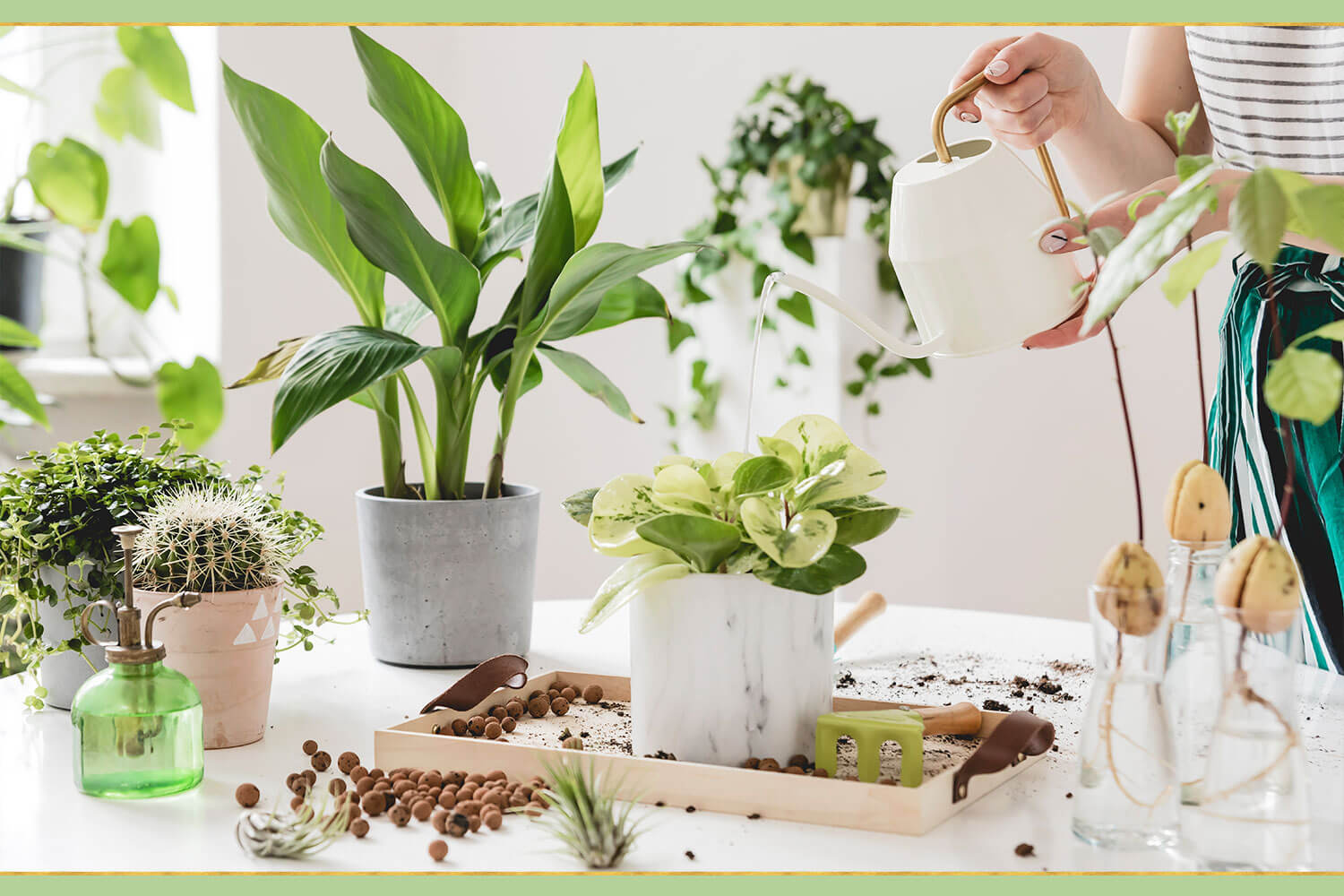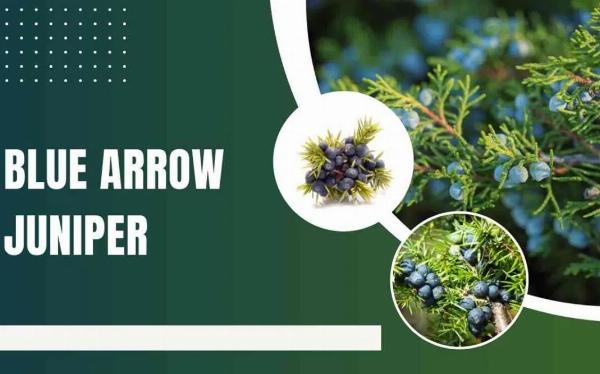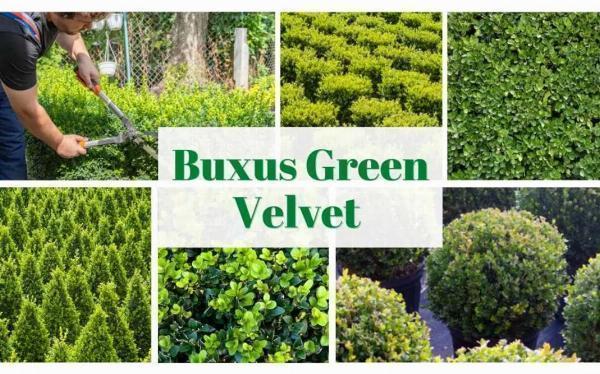Plant Parenting_ How to Take Care of Multiple Plants

Strong8k brings an ultra-HD IPTV experience to your living room and your pocket.
Plant Parenting: How to Take Care of Multiple Plants
Introduction:
Being a plant parent can be a fulfilling and rewarding experience, but it also comes with its fair share of challenges. Taking care of multiple plants requires dedication, knowledge, and organization. In this comprehensive guide, we will explore essential tips, strategies, and best practices to ensure your plants thrive and flourish in your care.
Understanding Your Plants:
Before diving into the specifics of plant care, it's crucial to understand the unique needs and characteristics of each plant in your collection. Research the different species you own, including their water, light, temperature, and humidity requirements. Categorize your plants based on their care needs to simplify your routine.
Creating a Plant Care Schedule:
Managing multiple plants can be overwhelming without a well-structured care schedule. Develop a weekly or monthly plan that includes watering, fertilizing, pruning, and other essential tasks. Consider using apps or calendars to set reminders, making it easier to track and manage your plant care routine effectively.
Watering Techniques:
Overwatering or underwatering are common mistakes among plant parents. Learn to observe signs of thirst or overhydration in your plants, such as drooping leaves or yellowing. Adjust your watering frequency and volume accordingly, and be mindful of seasonal changes that can affect water needs.
The Importance of Proper Drainage:
Ensure that your pots have adequate drainage holes to prevent waterlogged soil, which can lead to root rot. Elevate your pots on plant stands or use pot feet to allow excess water to escape freely.
Light and Sunlight:
Light is crucial for photosynthesis, but not all plants have the same light requirements. Group plants with similar light needs together, and place them in appropriate locations around your home, considering factors such as natural sunlight, artificial light, and shade.
Temperature and Humidity:
Plants have varying preferences when it comes to temperature and humidity. Research the ideal conditions for each species and use humidifiers or pebble trays to increase humidity levels indoors.
Soil and Fertilizing:
Use high-quality potting mix specific to the needs of your plants. Some plants prefer well-draining soil, while others require rich and moisture-retentive soil. Additionally, fertilize your plants regularly with balanced and appropriate fertilizers.
Pruning and Trimming:
Pruning is vital for maintaining plant health and shape. Learn the proper techniques for each type of plant and regularly remove dead or damaged foliage to promote new growth.
Pest and Disease Management:
Stay vigilant for signs of pests or diseases in your plants. Identify common plant pests and diseases and adopt preventive measures such as neem oil or natural predators.
Repotting:
As your plants grow, they may outgrow their pots. Know when and how to repot your plants, providing them with fresh soil and more space to thrive.
Rotating and Positioning:
Rotate your plants regularly to ensure even growth on all sides and prevent them from leaning towards the light source. This practice helps to keep your plants symmetrical and visually appealing.
Propagation:
Multiply your plant collection through propagation. Learn various propagation techniques, such as stem cuttings, division, or leaf cuttings, to create new plants from your existing ones.
Understanding Toxic Plants:
Some plants can be toxic to pets and humans if ingested. Be aware of the toxicity levels of your plants and keep them out of reach of curious pets and children.
Plant Care During Vacations:
Planning a vacation? Arrange for someone you trust to care for your plants while you're away. Provide clear instructions and ensure your plants will be in good hands.
Troubleshooting:
Despite your best efforts, plants may encounter challenges. Learn how to diagnose common plant problems and implement appropriate solutions to nurse them back to health.
Conclusion:
Being a successful plant parent of multiple plants requires a combination of patience, knowledge, and love. By understanding the unique needs of your plants, establishing a care schedule, and staying proactive in your approach, you can create a flourishing indoor garden that brings beauty and serenity to your home. With time and experience, you'll master the art of plant parenting and take pride in your green thumb accomplishments. Happy gardening!
Plant Parenting: How to Take Care of Multiple Plants
Introduction:
Being a plant parent can be a fulfilling and rewarding experience, but it also comes with its fair share of challenges. Taking care of multiple plants requires dedication, knowledge, and organization. In this comprehensive guide, we will explore essential tips, strategies, and best practices to ensure your plants thrive and flourish in your care.
Understanding Your Plants:
Before diving into the specifics of plant care, it's crucial to understand the unique needs and characteristics of each plant in your collection. Research the different species you own, including their water, light, temperature, and humidity requirements. Categorize your plants based on their care needs to simplify your routine.
Creating a Plant Care Schedule:
Managing multiple plants can be overwhelming without a well-structured care schedule. Develop a weekly or monthly plan that includes watering, fertilizing, pruning, and other essential tasks. Consider using apps or calendars to set reminders, making it easier to track and manage your plant care routine effectively.
Watering Techniques:
Overwatering or underwatering are common mistakes among plant parents. Learn to observe signs of thirst or overhydration in your plants, such as drooping leaves or yellowing. Adjust your watering frequency and volume accordingly, and be mindful of seasonal changes that can affect water needs.
The Importance of Proper Drainage:
Ensure that your pots have adequate drainage holes to prevent waterlogged soil, which can lead to root rot. Elevate your pots on plant stands or use pot feet to allow excess water to escape freely.
Light and Sunlight:
Light is crucial for photosynthesis, but not all plants have the same light requirements. Group plants with similar light needs together, and place them in appropriate locations around your home, considering factors such as natural sunlight, artificial light, and shade.
Temperature and Humidity:
Plants have varying preferences when it comes to temperature and humidity. Research the ideal conditions for each species and use humidifiers or pebble trays to increase humidity levels indoors.
Soil and Fertilizing:
Use high-quality potting mix specific to the needs of your plants. Some plants prefer well-draining soil, while others require rich and moisture-retentive soil. Additionally, fertilize your plants regularly with balanced and appropriate fertilizers.
Pruning and Trimming:
Pruning is vital for maintaining plant health and shape. Learn the proper techniques for each type of plant and regularly remove dead or damaged foliage to promote new growth.
Pest and Disease Management:
Stay vigilant for signs of pests or diseases in your plants. Identify common plant pests and diseases and adopt preventive measures such as neem oil or natural predators.
Repotting:
As your plants grow, they may outgrow their pots. Know when and how to repot your plants, providing them with fresh soil and more space to thrive.
Rotating and Positioning:
Rotate your plants regularly to ensure even growth on all sides and prevent them from leaning towards the light source. This practice helps to keep your plants symmetrical and visually appealing.
Propagation:
Multiply your plant collection through propagation. Learn various propagation techniques, such as stem cuttings, division, or leaf cuttings, to create new plants from your existing ones.
Understanding Toxic Plants:
Some plants can be toxic to pets and humans if ingested. Be aware of the toxicity levels of your plants and keep them out of reach of curious pets and children.
Plant Care During Vacations:
Planning a vacation? Arrange for someone you trust to care for your plants while you're away. Provide clear instructions and ensure your plants will be in good hands.
Troubleshooting:
Despite your best efforts, plants may encounter challenges. Learn how to diagnose common plant problems and implement appropriate solutions to nurse them back to health.
Conclusion:
Being a successful plant parent of multiple plants requires a combination of patience, knowledge, and love. By understanding the unique needs of your plants, establishing a care schedule, and staying proactive in your approach, you can create a flourishing indoor garden that brings beauty and serenity to your home. With time and experience, you'll master the art of plant parenting and take pride in your green thumb accomplishments. Happy gardening!
Note: IndiBlogHub features both user-submitted and editorial content. We do not verify third-party contributions. Read our Disclaimer and Privacy Policyfor details.







